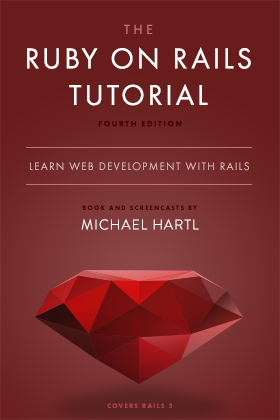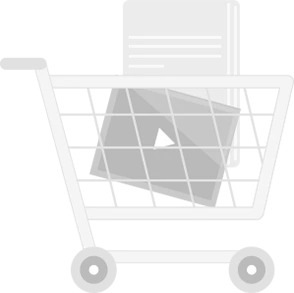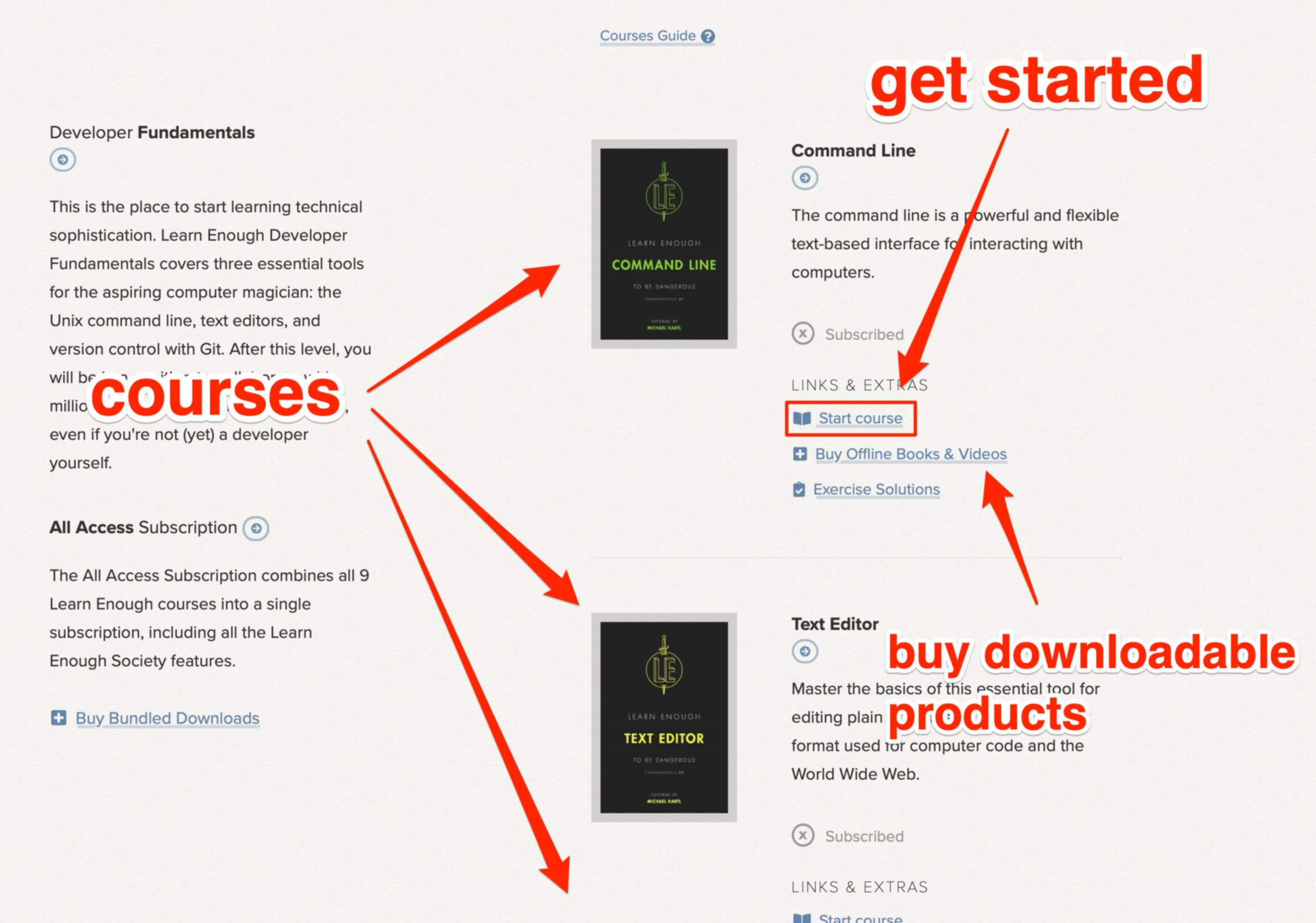Get Single Tutorial
Ruby on Rails Tutorial (Rails 5) is available as an ebook, an offline video series, and as a structured, self-paced online course. The course includes full online access to the book content, streaming videos, progress tracking, exercises, and community exercise answers.
All Access Subscription
The Learn Enough All Access Subscription includes the entire Learn Enough introductory sequence and the full Ruby on Rails Tutorial. More than 2500 pages of book content and 53 hours of video that teach you to code from total beginner up to professional-grade web development.

Ruby on Rails Tutorial (Rails 5) Learn Web Development with Rails Michael Hartl
NOTE: There is a newer version of the Ruby on Rails Tutorial available here
The Ruby on Rails Tutorial (Rails 5)
Premium Content
The Learn Enough tutorial section you have selected is premium content. You can get full access with an ebook purchase or a course subscription. If cost is a factor, please consider applying for a Learn Enough Scholarship, which includes both free and discount options.
You can send any feedback or questions to .
Get Started Now!
Course SubscriptionsCourse
Full online version of the tutorial, embedded streaming videos for all sections, exercises with editable answers, progress tracking, and membership in the Learn Enough Society (community exercise answers, private chat group). Pause your subscription at any time!
Need a little help?
Learn Enough offers a generous scholarship program to help out in case cost is a factor. We’ve already awarded over 1500 Learn Enough Scholarships to a wide variety of recipients, including students, people between jobs, and residents of countries with unfavorable exchange rates. Applications are quick, easy, and 100% confidential. Learn More
Money-Back Guarantee
All Learn Enough tutorials come with a 60-day 100% money-back guarantee. If for any reason you aren’t satisfied with any tutorial purchase, just let us know and we’ll refund your payment.
All Access Subscription
Get free access to all 10 Learn Enough courses (including the Ruby on Rails Tutorial) for 7 days!
Free 7 Day trial details
We require a credit card for security purposes, but it will not be charged during the trial period. After 7 days, you will be enrolled automatically in the monthly All Access subscription.
BUT you can cancel any time and still get the rest of the 7 days for free!
All Learn Enough tutorials come with a 60-day 100% money-back guarantee.










